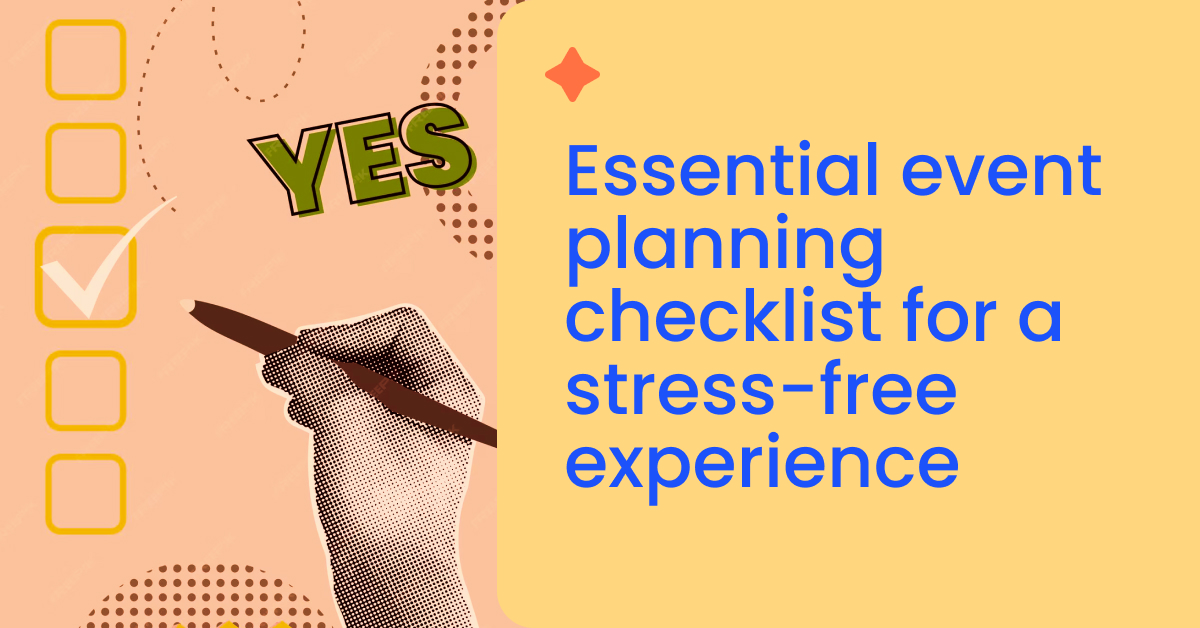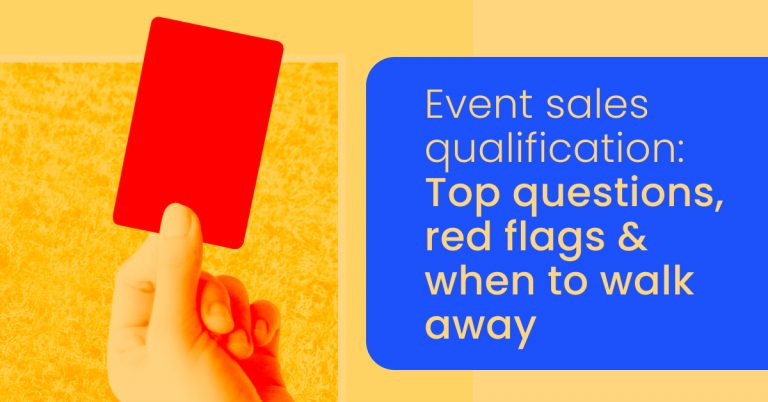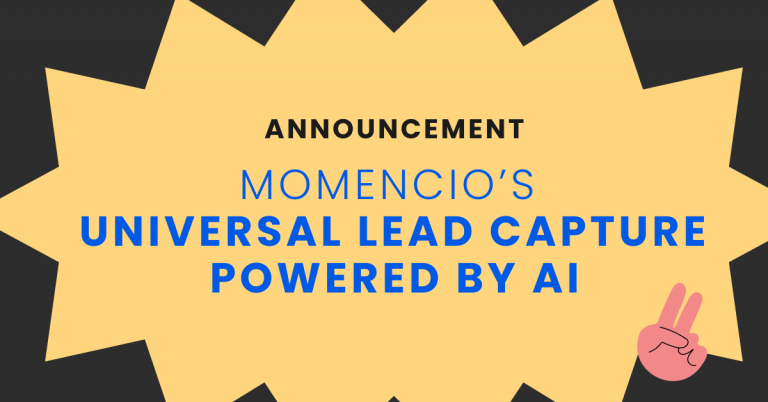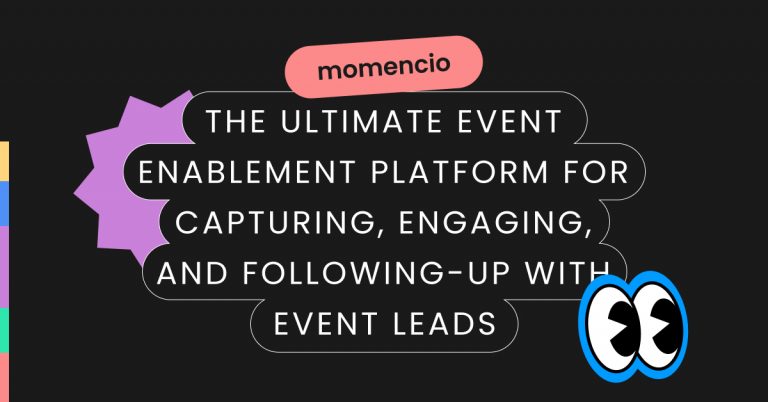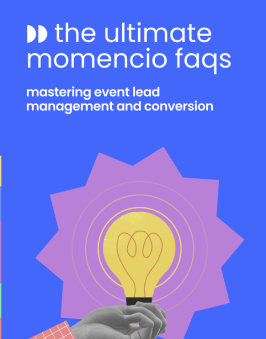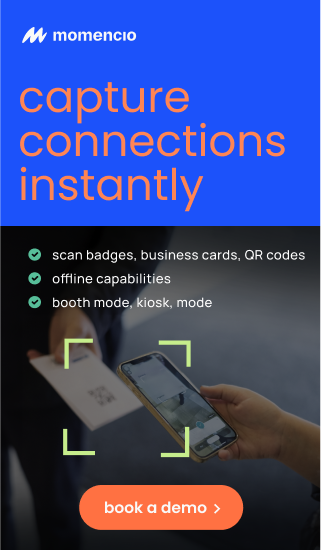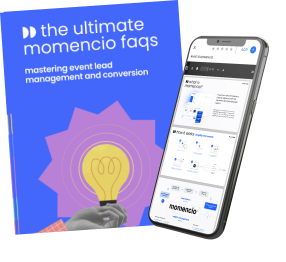Planning a successful event requires meticulous attention to detail and a structured approach. By following a comprehensive event planning checklist, you can ensure that no critical aspect is overlooked, leading to a seamless and stress-free experience. This guide provides a step-by-step framework to help you navigate the complexities of event planning, from defining objectives to post-event evaluation.
According to industry insights, 52% of event planners identify increasing event attendance as a significant challenge.
This statistic underscores the importance of thorough planning and strategic execution. By adhering to a detailed event planning checklist, you can address potential challenges proactively and enhance the overall success of your event.
In this article, we will delve into each critical phase of event planning, offering practical tips and insights to guide you through the process. Whether you’re organizing a corporate conference, a trade show, or a social gathering, this comprehensive checklist will serve as your roadmap to a successful event.
Define your event objectives and goals
The foundation of any successful event lies in clearly defined objectives and goals. Understanding the purpose of your event will guide all subsequent planning decisions and help measure its success.
Key considerations:
- Purpose: Determine the primary reason for hosting the event. Is it to educate, celebrate, promote, or fundraise?
- Target audience: Identify who you want to attend. Consider demographics such as age, profession, interests, and location.
- Key performance indicators (KPIs): Establish metrics to evaluate success, such as attendance numbers, revenue targets, or engagement levels.
By setting clear objectives, you create a focused framework that informs all aspects of planning and execution.
Establish a realistic budget
A well-planned budget ensures that all financial aspects of the event are accounted for, preventing overspending and financial surprises.
Budget components:
- Venue costs: Rental fees, security deposits, and any additional charges.
- Catering: Food and beverage costs, including service fees and gratuities.
- Entertainment/speakers: Fees for performers, speakers, or presenters.
- Marketing and promotion: Expenses related to advertising, printing, and digital marketing campaigns.
- Logistics: Transportation, accommodation, and equipment rentals.
- Contingency fund: Allocate a percentage (typically 10-15%) for unexpected expenses.
Regularly updating and reviewing the budget helps maintain financial control and allows for adjustments as needed.
Assemble your event planning team
A dedicated team with clearly defined roles ensures that all tasks are managed efficiently.
Team roles:
- Event manager: Oversees the entire event planning process and coordinates between teams.
- Logistics coordinator: Manages venue setup, equipment, and on-site operations.
- Marketing lead: Handles promotion, advertising, and public relations.
- Sponsorship coordinator: Secures sponsors and manages sponsor relationships.
- Volunteer coordinator: Recruits and manages volunteers assisting with the event.
Clearly defining roles and responsibilities prevents overlap and ensures accountability within the team.
Select an appropriate date and venue
Choosing the right date and venue is crucial for maximizing attendance and ensuring the event’s success.
Date selection:
- Avoid conflicts: Ensure the chosen date doesn’t clash with major holidays, local events, or industry conferences.
- Lead time: Allow sufficient time for planning and promotion. For larger events, a lead time of 6-12 months is advisable.
Venue considerations:
- Location: Choose a venue that is accessible to your target audience, considering factors like transportation and parking.
- Capacity: Ensure the venue can comfortably accommodate your expected number of attendees.
- Amenities: Check for necessary facilities such as audio-visual equipment, Wi-Fi, and catering services.
- Ambiance: The venue’s atmosphere should align with the event’s theme and objectives.
Develop a detailed event master plan
A comprehensive event master plan serves as the blueprint for executing your event seamlessly. This plan should outline every aspect of the event, from logistics to marketing, ensuring nothing is overlooked.
Key components of an event master plan
- Event timeline – Establish a schedule for pre-event, event-day, and post-event activities.
- Logistics planning – Outline details such as vendor coordination, equipment setup, security arrangements, and on-site operations.
- Sponsorship & partnership management – Define roles for sponsors and partners, including their branding opportunities and speaking engagements.
- Risk management plan – Identify potential risks (e.g., weather issues, technical failures) and establish contingency plans.
- Communication plan – Ensure that all stakeholders (attendees, staff, speakers, vendors) receive clear instructions and updates.
Pro tip: Create a checklist for each stage of the event planning process to track progress and prevent last-minute surprises.
Implement effective marketing and promotion strategies
Without proper marketing, even the most well-planned event can fail to attract attendees. Your event marketing strategy should leverage multiple channels to maximize outreach and engagement.
Key marketing tactics:
Create a compelling event website
- Include event details, speaker bios, agenda, and registration options.
- Optimize for SEO by using keywords like event planning checklist, event management checklist, and event strategy to improve visibility.
Email marketing campaigns
- Segment your audience and send personalized invitations.
- Use automated email sequences for event reminders and post-event follow-ups.
Leverage social media
- Create an event hashtag for better engagement and tracking.
- Post teasers, behind-the-scenes content, and countdowns leading up to the event.
Paid advertising & retargeting
- Use Facebook, LinkedIn, and Google Ads to target your ideal audience.
- Retarget previous event attendees to increase conversions.
Partner with influencers & industry experts
- Have speakers and sponsors promote the event on their platforms.
- Use affiliate links and promo codes to drive registrations.
Coordinate logistics and on-site operations
Proper coordination of event logistics ensures smooth execution on the big day. This involves managing venue setup, equipment, security, catering, and attendee check-in processes.
Logistics essentials:
Venue setup & technology
- Ensure AV equipment, Wi-Fi, and lighting are functional.
- Set up branding materials such as banners, booths, and signage.
Attendee check-in & registration
- Use digital check-in solutions to reduce wait times.
- Provide digital event agendas before or upon arrival.
Speaker & panelist coordination
- Ensure speakers are briefed and equipped with necessary materials.
- Conduct mic checks and presentation run-throughs.
Security & emergency plans
- Have trained security personnel on-site.
- Create an emergency response plan and communicate it with your team.
Pro tip: Run a full pre-event walkthrough to test logistics and resolve issues before doors open.
Engage attendees and enhance their experience
The attendee experience is a defining factor in the event’s success. To maximize engagement, prioritize networking opportunities, interactive sessions, and seamless event execution.
Ways to elevate the attendee experience:
Offer interactive sessions
- Include Q&A sessions, live polls, and breakout workshops.
- Utilize event apps that allow real-time interaction.
Prioritize networking
- Create networking lounges and virtual meetups.
- Use AI-powered matchmaking tools to connect like-minded attendees.
Gamification & incentives
- Offer rewards for active participation.
- Use event gamification tools such as leaderboards and scavenger hunts.
Provide high-quality food & beverage options
- Cater to different dietary preferences and ensure ample refreshment stations.
Pro tip: Use event feedback forms and real-time attendee polls to enhance engagement and improve future events.
Leverage technology to streamline event planning
Incorporating technology into your event planning process can significantly enhance efficiency, improve attendee experience, and simplify logistics management. With the right event tech tools, you can automate tedious tasks, increase engagement, and collect valuable data for post-event analysis.
Key areas where event tech makes a difference
- Event registration & ticketing
- Use event management platforms like Eventbrite, Cvent, or Bizzabo to handle ticket sales and RSVPs.
- Offer mobile-friendly registration and QR codes for seamless check-in.
- On-site check-in & attendee tracking
- Use badge scanning and RFID technology to speed up check-ins and monitor attendee movement.
- Implement facial recognition check-in for a touchless experience.
- Virtual & hybrid event capabilities
- Offer live streaming and on-demand sessions for remote attendees.
- Use virtual networking lounges and AI matchmaking tools to facilitate connections.
- Engagement & interaction tools
- Use event apps like momencio for interactive polls, Q&A sessions, and live updates.
- Incorporate gamification (leaderboards, scavenger hunts) to drive engagement.
- Lead capture & post-event follow-up
- Equip sales teams with lead retrieval apps for real-time data capture.
- Use platforms like momencio to streamline post-event lead nurturing and ROI tracking.
Pro tip: Choose an all-in-one event management platform to consolidate registration, attendee tracking, engagement, and analytics in one place.
By leveraging event technology, you can enhance attendee engagement, optimize logistics, and measure success more effectively—ensuring a seamless, data-driven event experience.
Conduct post-event evaluation and follow-up
The event isn’t over when the last attendee leaves. The post-event phase is critical for analyzing performance and nurturing leads.
Post-event must-dos:
Send thank you emails & surveys
- Express gratitude to attendees, sponsors, and speakers.
- Include post-event surveys to gather insights on strengths and areas for improvement.
Analyze event performance metrics
- Evaluate attendance rates, engagement levels, and ROI.
- Use analytics tools to track website traffic, social media reach, and conversion rates.
Follow up with leads & prospects
- Share event highlights and exclusive content via email.
- Nurture leads with personalized follow-ups and sales offers.
Document key learnings for future events
- Conduct a debrief session with your team.
- Update your event planning checklist based on new insights.
Pro tip: Use post-event engagement strategies to keep attendees connected and excited for your next event.
Conclusion
By following this event planning checklist, you can eliminate guesswork and ensure a seamless experience from start to finish. Whether you’re organizing a corporate conference, trade show, or networking event, proper planning will help you meet your objectives while creating lasting value for attendees.
Key takeaways:
- Define your event’s goals, audience, and KPIs.
- Create a realistic budget and detailed master plan.
- Use strategic marketing to boost attendance.
- Optimize logistics and on-site operations for a smooth experience.
- Engage attendees through interactive and networking opportunities.
- Conduct post-event analysis to improve future events.
Want to make event lead capture and post-event engagement effortless? Try momencio today! Book a free demo to see how momencio’s ultimate event lead capture and sales activation solution can help you turn booth attendees into long-term customers.
FAQs
- What is the most important aspect of event planning?
- The most critical factor is defining clear objectives. Without a goal, it’s challenging to measure success or ensure a structured event experience.
- How early should I start planning an event?
- For large events, start 6-12 months in advance. For smaller gatherings, 3-6 months is typically sufficient.
- How do I choose the right venue?
- Consider location, capacity, amenities, and cost. Ensure it aligns with your event’s theme and accessibility requirements.
- How can I increase event attendance?
- Utilize social media, email marketing, influencer partnerships, and paid ads to boost registration numbers.
- What should be included in a post-event report?
- Include attendance metrics, engagement stats, budget analysis, survey feedback, and key takeaways for future improvements.
